Underwater launch systems: how to get out of the water into orbit?
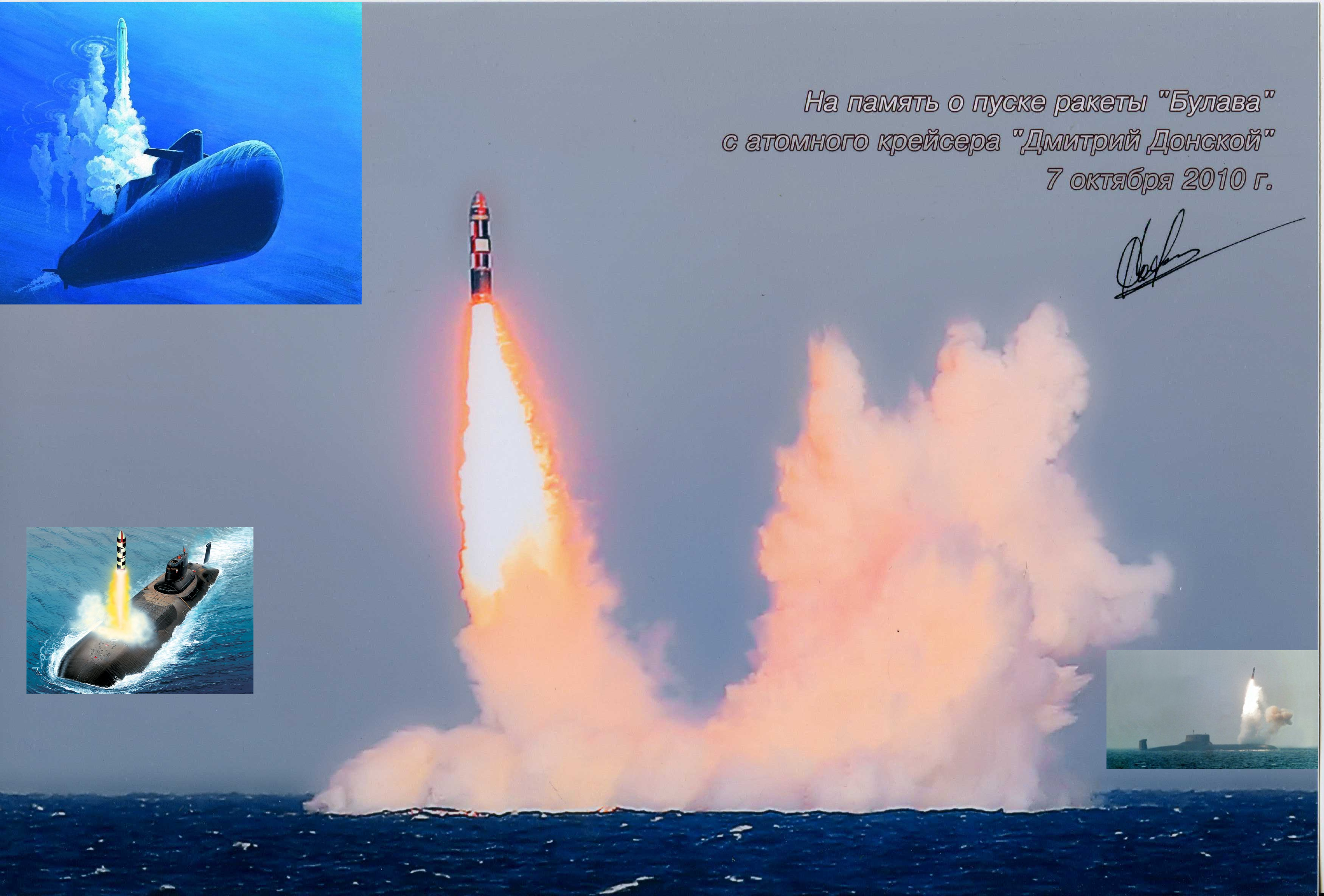
The circle swells with the lens, stretches, rises, and in fact becomes like a low dome. It is visible, how from its center, from the outlined "eyes", a rod down streams of water. Then the blunted nose of the rocket is shown, rapidly rushing upward, pulling the blue-white-red steel body after it ... The white fireball for a moment turned the gloomy Khmer into a tropical dawn ... A powerful growing roar. The rocket barely noticeably swung the tail section, groping for the course, the axial rotational movement ceased, it rapidly soared upwards, leaving behind it a thick dark plume.[1]
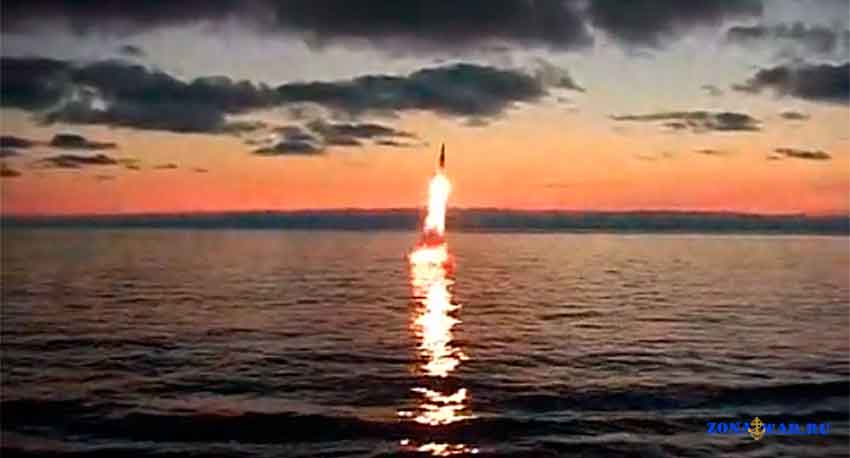
Do you think I want to tell once again about the "killers of cities", these secretive predators of the sea depths, that with their volley they can wipe the surface, comparable to the area of more than 300 megacities of the world, into dust?
Not. More precisely, not quite "no":
it will be about the almost peaceful launch vehicles Zyb, Volna, Shtil, Surf and Rickshaw.
To be precise, at birth they were very real martial and could wipe almost any country of the world off the face of the planet.
Marine Rocket and Space Systems
March 1985, after a series of redemptions of "Kremlin elders", the post of General Secretary of the Central Committee of the CPSU was taken by Mikhail S. Gorbachev: a former party organizer of the Stavropol Territorial-Industrial Agricultural Administration.

There was “smell” in the air ... no, not a thunderstorm, but a pull: “publicity” and “restructuring”, “cooperation” and “new political thinking”, “pluralism” and “disarmament”.
As the economic situation in the country deteriorated, the Soviet leadership considered arms reductions and military spending as a way to solve financial problems, and therefore did not require guarantees and adequate steps from their partners, while losing their positions in the international arena.[2]
It will be about how the State Rocket Center of the KB them. V.P.Makeeva (Miass) solved the issue of "conversion" in the era of "perestroika" and after it.
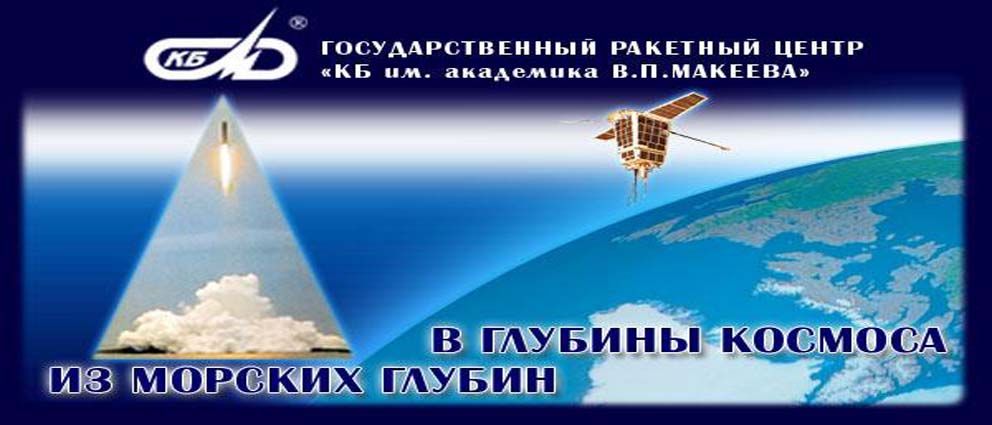
In 1985, the company actively continued to develop combat missile technology for the needs of the Soviet Navy: successfully upgraded the D9PM and D19 missile systems, developed and tested new combat equipment, and conducted work on the creation and full-scale tests of the B-SS-3M91 strategic complex. -NX-28.

With military products GRTS and its performance characteristics can be found op links:
→ Combat missile systems.
→ Main features.
→ Underwater start. The result of the CB engineering / video review /.
At these times, the leadership decided that KBM needed to find and conquer its niche in rocket and space topics.
One of the directions of these works was the proposal to use ballistic missile submarines (SLBMs) to put payloads into space. First of all, they drew attention to SLBMs that are to be disposed of after expiration of their service life and in accordance with the Treaty on the Reduction and Limitation of Strategic Offensive Arms.
Do you let pots and pans or do what we are good at?
The work was carried out in the following directions:
- launching launches from submarines re-equipped with combat missiles, rescue vehicles into the upper atmosphere or into space for the purpose of scientific research, obtaining materials and biological products under microgravity conditions;
- creation of launch vehicles on the basis of SLBMs for launching small-sized spacecraft;
- design of rocket and space complexes on the basis of technical solutions, worked out on combat sea and land missiles;
- development of small spacecraft (“Compass”);
- creation of information-measuring complexes (Miass).
The pioneer in this area was the re-equipped RSM-25 missiles (URAV Navy-4K10, NATO-SS-N-6 Mod 1, Serb) : the Zyb launch vehicle , which was used to conduct unique experiments in conditions of short-term weightlessness, provided on a passive plot of the trajectory (zero gravity time 15 minutes, the level of microgravity 10 -3 g).

The unit consisted of 15 exothermic furnaces, information-measuring and command equipment, a parachute system for soft landing. Various raw materials were placed in exothermic furnaces, in particular, silicon-germanium, aluminum-lead, Al-Cu, high-temperature superconductor and others, of which during the experiment in weightless conditions at a temperature in furnaces from 600 ° C to 1500 ° C obtained materials with new properties.
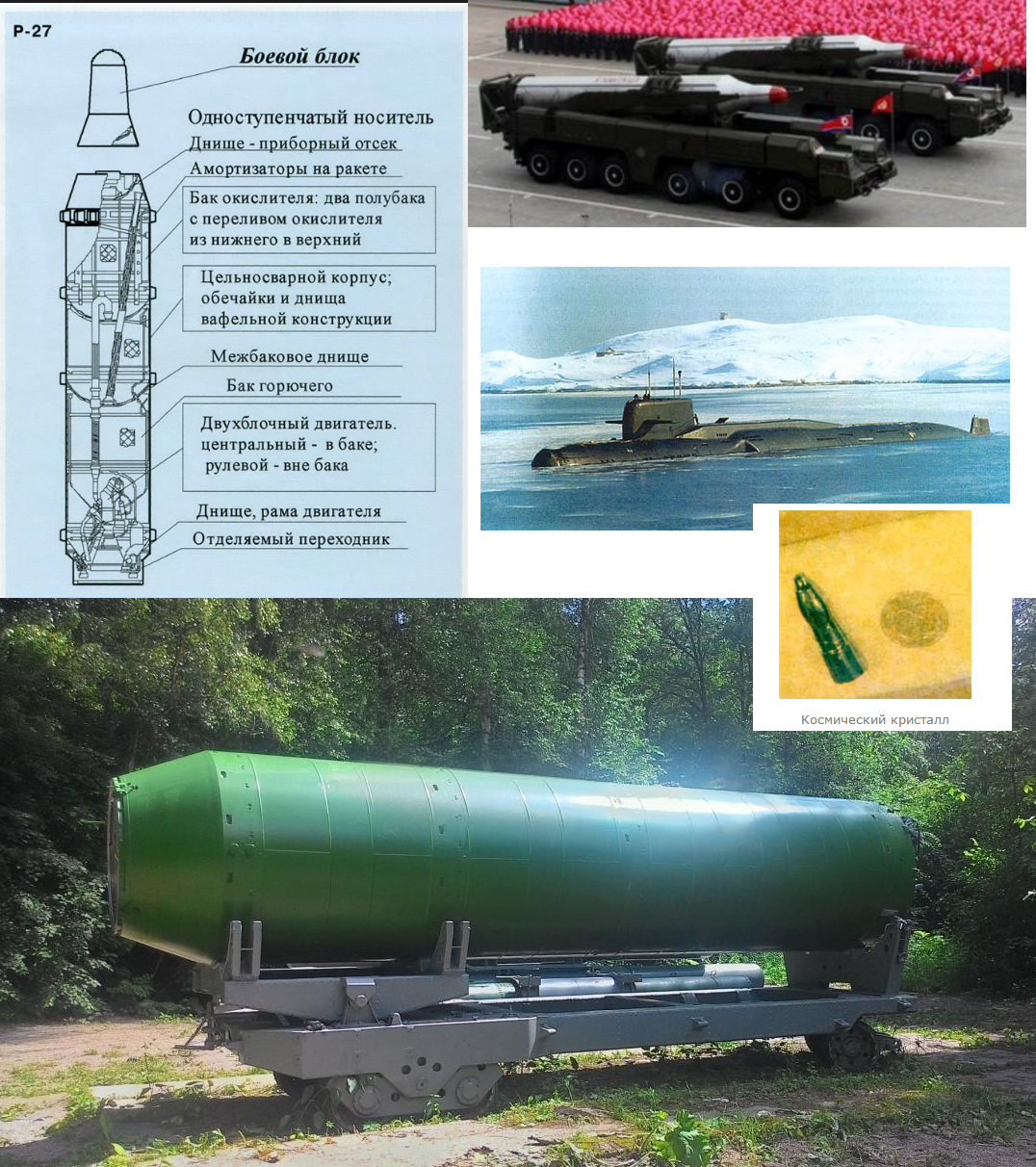
On December 18, 1991, for the first time in domestic practice, a ballistic launch vehicle with the Sprint technology module was launched from a nuclear submarine of the Navaga type (Project 667A Navaga, according to the classification of the United States and NATO - Yankee). The launch was successful, and the scientific customer NPO Compomash received unique samples of new materials. Thus, the first step was taken in the rocket and space subject of MSC.
But not everything went so simple: the State Emergency Committee happened , then the USSR itself ceased to exist, the government and the general line of it, Chubais and Gaidar, Yeltsin and his generals, and other new figures of the political elite changed. Racket and the formation of a new business "elite".

The reduction in the volume of defense issues has put in front of the staff of the SRC "KB them. Academician V.P. Makeev "the task of intensified search for new" civilian "high-tech areas, which would allow to keep highly qualified personnel, material and technological base, in essence, give the opportunity to" survive. "
In June 1992, after long ordeals and troubles, a new decree of the “new” (Russian) government was issued, which allowed the enterprise to launch work to create civilian rocket and space systems based on land, air and sea launches on the basis of the converted SLBMs.
Rapid adaptability to new trajectories, energy-mass perfection of SLBMs, combined with high reliability and safety indicators, make it possible tocarrying out training and practical shooting and start-ups to confirm and extend the service life to use them as means of delivery into the near space of payloads for various purposes.
In the interests of conducting new experiments under zero gravity, a ballistic biotechnological unit "Ether" was created with the scientific equipment "Medusa", designed for high-speed cleaning during the flight of special medical preparations in an artificially created electrostatic field. On December 9, 1992, a successful launch of a Zyb launch vehicle equipped with Medusa equipment was carried out off the coast of Kamchatka from a nuclear submarine of the Pacific Fleet, and in 1993 another similar launch was conducted. In the course of these experiments, the possibility of obtaining high-quality drugs, including the anti-tumor interferon Alfa-2, under conditions of short-term weightlessness was demonstrated.
In 1991–1993 Three launches of the Zyb carrier rockets with the Sprint and Efir scientific and technological blocks, developed jointly with the NPO Composite and the Center for Space Biotechnology, were carried out from the submarine of Project 667BDR.
The Sprint block was intended for testing the processes of obtaining semiconductor materials with an improved crystal structure, superconducting alloys, and other materials under weightless conditions. The “Ether” block with the biotech equipment “Medusa” was used for research of the technology of purification of biological materials and the production of highly pure biological and medical preparations by electrophoresis.
Unique samples of single crystals of silicon and some alloys ("Sprint") were obtained, and in the "Medusa" experiments, according to the results of studies of antiviral and antitumor interferon "Alpha-2", it was possible to confirm the possibility of space purification of biological preparations under conditions of short-term weightlessness. In practice, it has been proven that Russia has developed an effective technology for conducting experiments under conditions of short-term weightlessness using sea-based ballistic missiles.
The logical continuation of this work was the launch of the Volna launch vehicle in 1995.
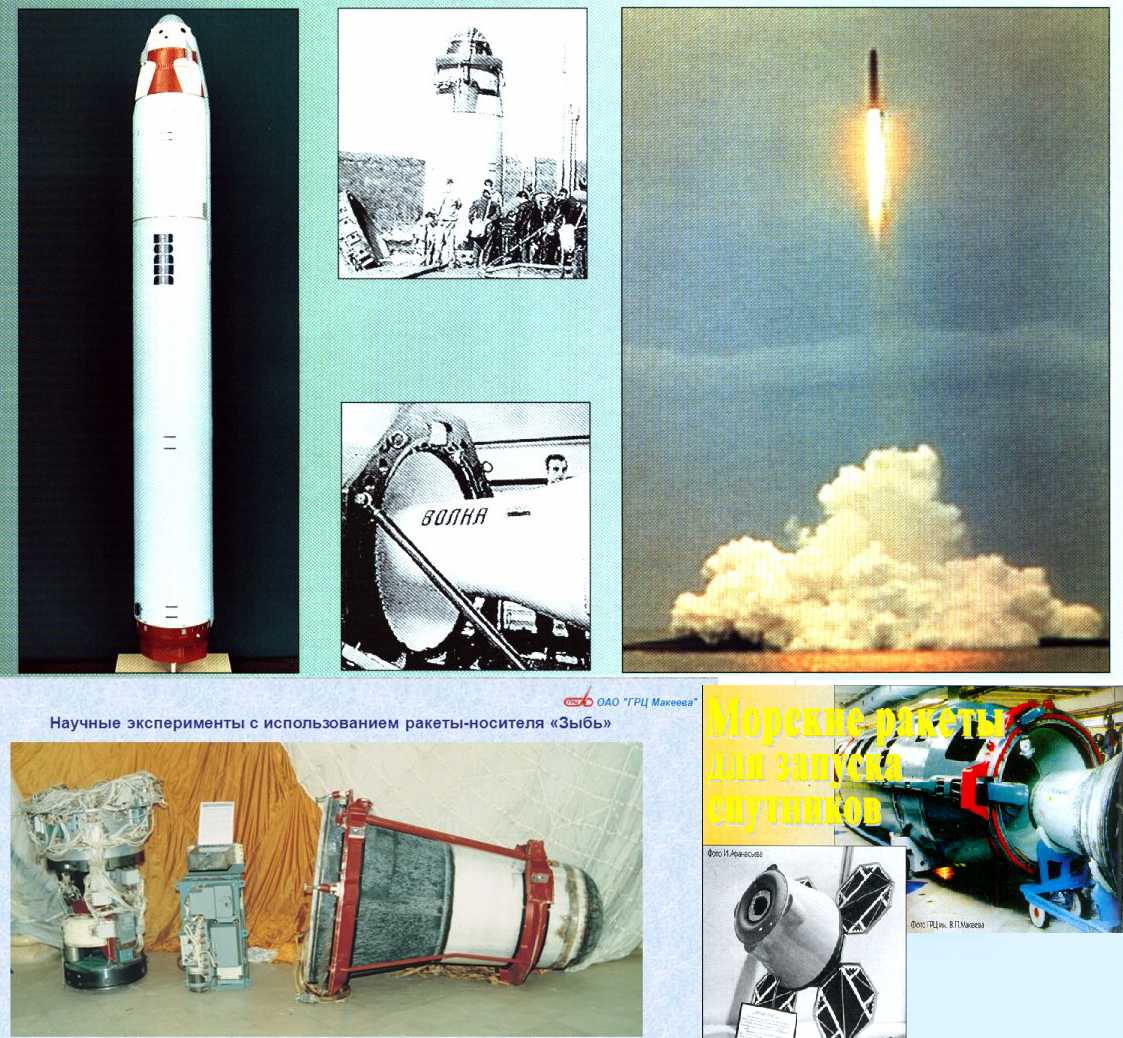
The launch vehicle Volna, created on the basis of the RSM-50 (SS-N-18) SLBMs, with a starting mass of about 34 tons, is used, first of all, when launched along ballistic trajectories to solve the problems of developing technologies for producing materials under short-term microgravity and other studies.
The combat use of the RSM-50 SLBMs from the submarine’s submerged position is ensured when the sea is rough to 8 points, i.e. practically achieved all-weather use for scientific research and launches of the launch vehicle.
 The start of commercial use of SLBMs can be considered the launch of the Volna launch vehicle from the Kalmar submarine of Project 667 BDRM in 1995. The launch was made on the ballistic route of the Barents Sea - Kamchatka Peninsula at a distance of 7500 km. The thermoconvection module of the University of Bremen (Germany) has become a payload for this international experiment.
The start of commercial use of SLBMs can be considered the launch of the Volna launch vehicle from the Kalmar submarine of Project 667 BDRM in 1995. The launch was made on the ballistic route of the Barents Sea - Kamchatka Peninsula at a distance of 7500 km. The thermoconvection module of the University of Bremen (Germany) has become a payload for this international experiment. 
When launching the Volna, the rescued shuttle shuttle Volan is used. It is intended for conducting scientific and applied research in zero gravity conditions by launches along suborbital trajectories.
In flight, telemetry information about the monitored parameters is transmitted from the vehicle. At the final stage of the flight, the device makes a ballistic descent, and before landing, a two-stage parachute rescue system is activated. After a “soft” landing, the device is quickly detected and evacuated.

To launch research equipment of increased mass (up to 400 kg) is an improved version of the rescued Volan-M aircraft. In addition to the size and weight of this option is different original aerodynamic layout.
Apart from scientific instruments weighing 105 kg, the onboard measuring complex is located in the rescue vehicle. It provides control of the experiment and control of flight parameters. SLA "Volan" is equipped with a three-stage parachute landing system and instrumentation operational (no more than 2 hours) search apparatus after landing. In order to reduce the cost and development timeframe, technical solutions, components and instruments of mass-produced rocket complexes were borrowed to the maximum extent.
In the process of start-up carried out in 1995, the level of microgravity was 10 -4 ... 10-5 g with a zero gravity time of 20.5 minutes. Studies have begun that show the fundamental possibility of creating a rescued aircraft with scientific equipment weighing up to 300 kg, launched by the Volna launch vehicle along a trajectory with a gravity time of 30 minutes at a microgravity level of 10 -5 ... 10 -6 g.
The Wave rocket can be used to launch equipment on suborbital trajectories to study geophysical processes in the upper atmosphere and in near space, monitor the Earth's surface, conduct various, including active, experiments.
The payload area is a truncated cone with a height of 1670 mm, a base diameter of 1350 mm and a blunt radius of the top of the cone 405 mm. The rocket provides removal of payloads weighing 600 ... 700 kg on a trajectory with a maximum height of 1200 ... 1300 km, and with a mass of 100 kg - with a maximum height of up to 3000 km. It is possible to install on the rocket several elements of the payload and their sequential separation.
In the spring of 2012, the EXEPRT capsule was launched from a submarine in the Pacific Ocean using the Volna Russian rocket-space complex, commissioned by the German Aerospace Center (DLR).
The EXEPERT project is implemented under the direction of the European Space Agency.
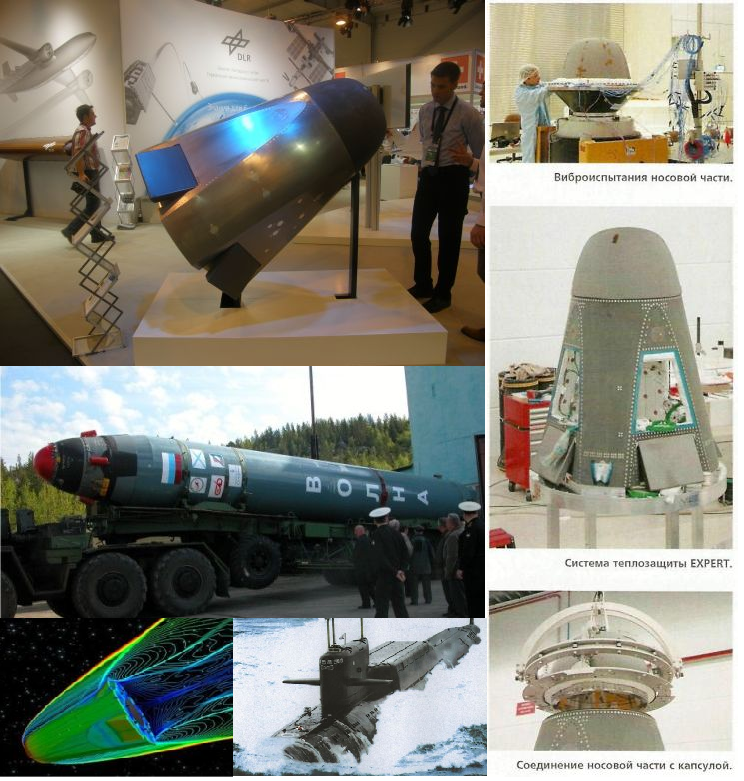
The Stuttgart Institute for the Study of Design and Design Technology and the German Aerospace Center have developed and manufactured a ceramic fiber nose piece for the ЕХРЕРТ capsule.
In the nose part consisting of ceramic fiber, sensors are located that record environmental data during the return of the capsule to the atmosphere, such as surface temperature, heat flow, and aerodynamic pressure. In addition, in the nose there is a window through which the spectrometer records the chemical processes occurring in the front of the shock wave upon entry into the atmosphere.
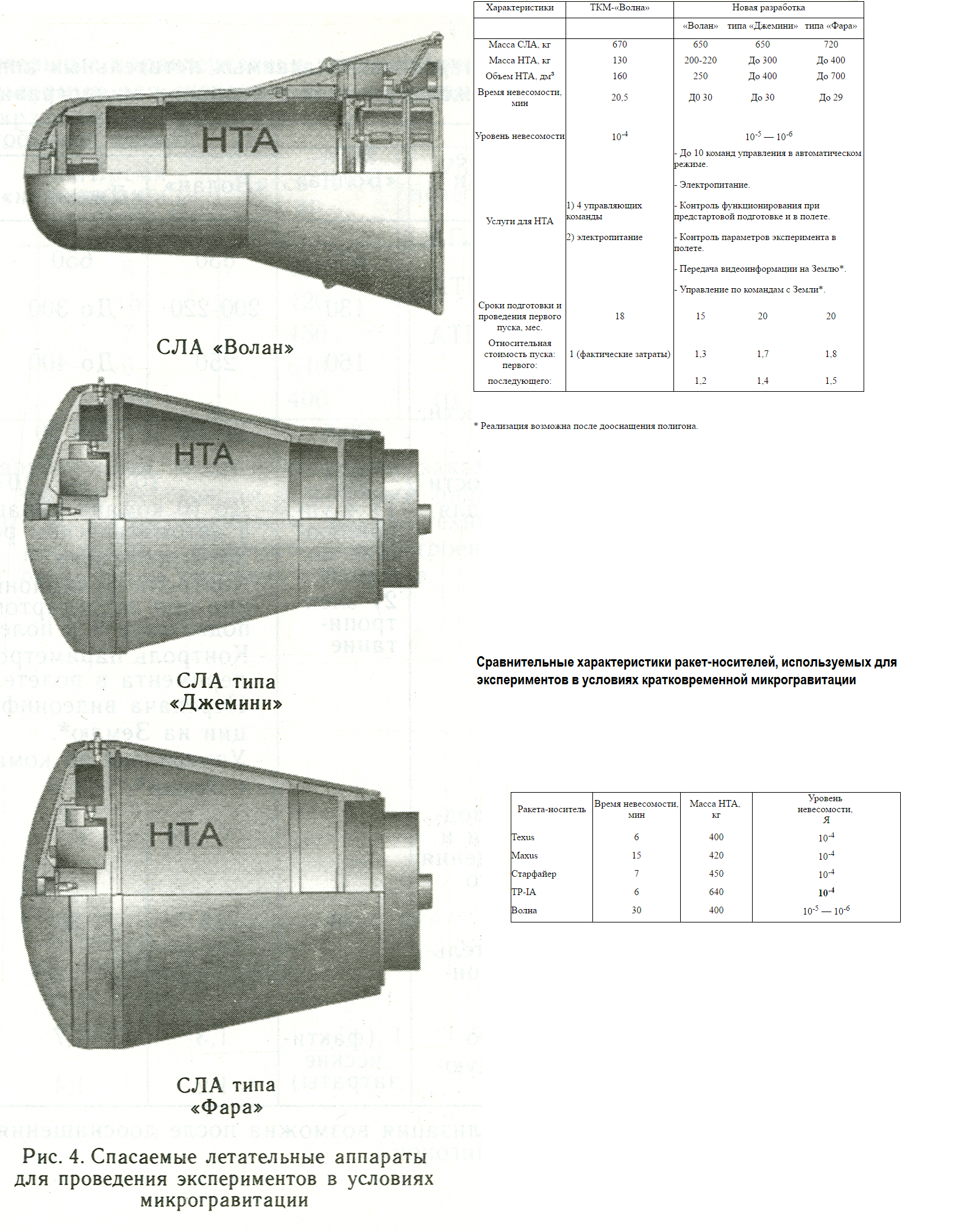
→ Technical characteristics of the Volna launch vehicle
Booster "Calm"

The family of launch vehicles of the light class: “Calm”, “Calm-2.1”, “Calm-2R” was developed on the basis of the R-29RM SLBM and is intended for launching small-sized spacecraft into near-earth orbits. Booster "Calm" has no analogues in the world in terms of energy and mass indicators achieved, provides the removal of payloads weighing up to 100 kg into orbits with a perigee height of 500 km with an inclination of 78.9º.
When finalizing the standard R-29RM SLBM, some changes were made to launch the spacecraft. A special frame has been added for the installation of a launching spacecraft and the flight program has been changed. At the third stage, a special telemetry container with service equipment was installed to control the removal of ground services. The designers also had to solve the problem of heating the head fairing during the launch of the rocket and its escape from under water, which could damage the spacecraft.
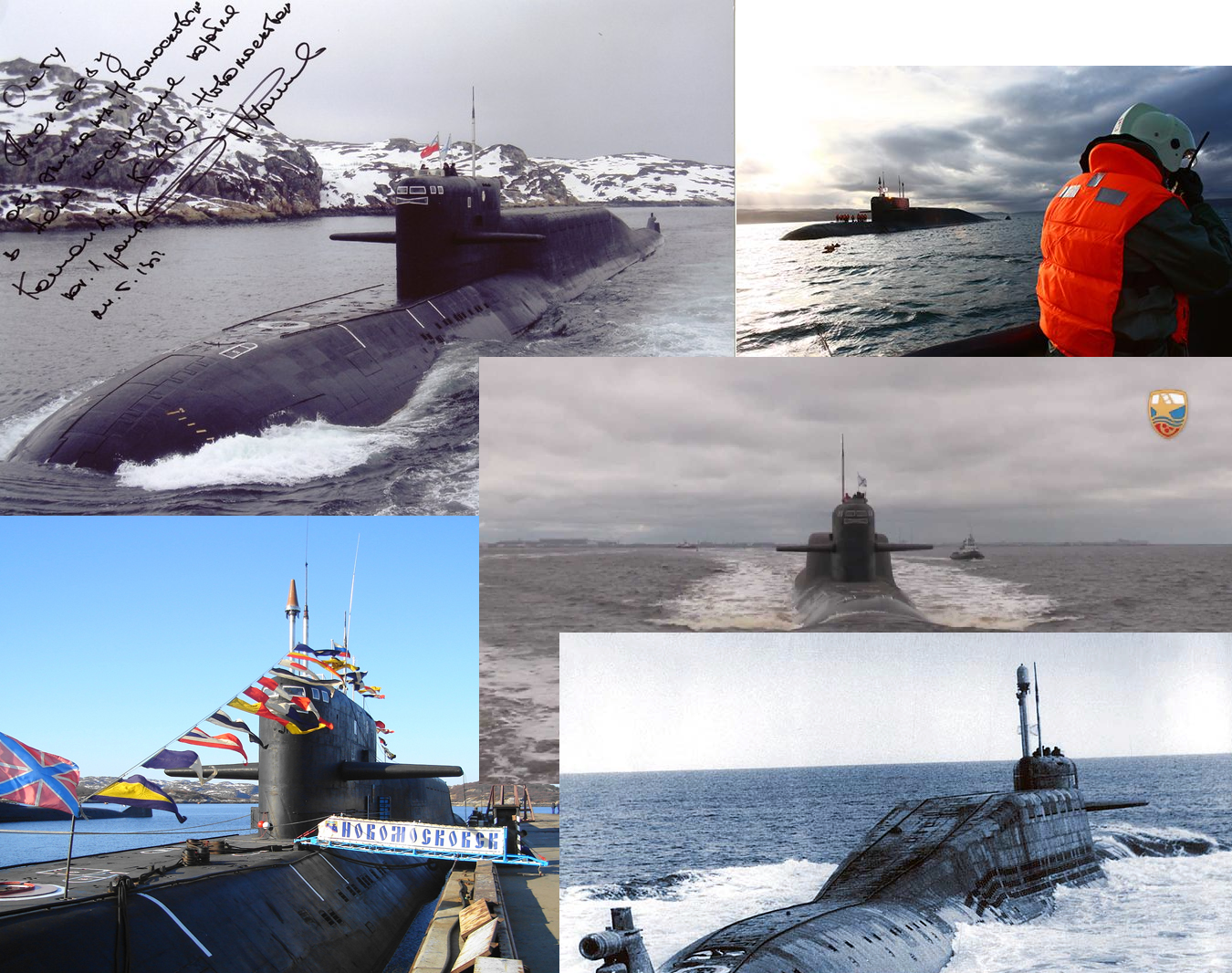
The spacecraft is placed in a special capsule that protects the payload from thermal, acoustic and other influences from the upper stage. After reaching the given orbit, the capsule with the spacecraft is separated, and the last stage is taken away from the flight path of the device. The capsule is opened and the cargo is released after the stage has gone a distance, excluding the impact of the working engines on the spacecraft.
The first launch of the Stihl-1 launch vehicle was made on July 7, 1998 from the board of the nuclear submarine K-407 Novomoskovsk. The payload was two satellites of the Berlin Technical University (Technische Universitat Berlin, TUB) -Tubsat-N and Tubsat-Nl.

The larger of the Tubsat-N satellites has dimensions of 320x320x104 mm and a mass of 8.5 kg. The smaller of the Tubsat-Nl devices is installed at launch on top of the Tubsat-N spacecraft.
Its overall dimensions are 320x320x34 mm, weight is about 3 kg.
The satellites were put into close to the estimated orbit. The parameters of the orbit of the third stage of the PH after removal from the spacecraft were:
- orbit inclination 78.96 °;
- the minimum distance from the Earth’s surface is 405.7 km;
- the maximum distance from the Earth’s surface is 832.2 km;
- period of revolution 96.83 minutes.

At the third stage of the carrier, a special container weighing 72 kg is installed. The container contains telemetry equipment for monitoring a number of parameters and equipment for conducting orbital monitoring.
The nuclear submarine K-407, from which the launch was carried out, is part of the third fleet of the Northern Fleet and is based on the Sayda-Guba naval base in the Deer Bay near the village of Skalisty (formerly Gadzhiyevo , then renamed Gadzhievo again) Murmansk areas.


This is one of the seven ships built according to the project 667BDRM "Dolphin" (Delta IV according to NATO classification).

The Shtil-1 PH allows launching a payload of 70 kg mass into a circular orbit with a height of 400 km and an inclination of 79 degrees.
The design of the upper stage of the prototype is designed to accommodate four compact warheads in isolated small-sized volumes. Due to the fact that modern commercial spacecraft, have a low density of layout and require a relatively large solid space, the full use of the energy capabilities of the PH is impossible. That is, the design of the PH imposes a limit on the volume occupied by the spacecraft, which is 0.183 m 3 . The energy of the launch vehicle allows one to output spacecraft of greater mass.
Re-equipment of the R-29RM type rocket into the “Calm” launch vehicle is made with minimal modifications, the spacecraft is placed on the seat of one of the warheads in a special capsule that provides protection from external influences. Rocket launch is carried out from the submarine or surface positions of the submarine. The flight is carried out in inertial mode.
A distinctive feature of this complex is the use of the existing infrastructure of the Nenoksa landfill, including ground launch facilities, as well as serial R-29RM ballistic missiles removed from combat duty. Minimal improvements on the rocket will ensure high reliability and accuracy of the payload in orbit at a low launch cost ($ 4 ... 5 million).
The Stihl-2 rocket launcher was developed as a result of the second stage of the modernization of the R-29RM ballistic missile. At this stage, to accommodate the payload, a payload compartment is created, consisting of an aerodynamic fairing discharged in flight, and an adapter on which the payload is placed. The adapter provides docking of the payload compartment with the carrier. The volume of the compartment for placing the payload is 1.87 m 3 .
The complex was created on the basis of ballistic missiles of submarines R-29RM (RSM-54, SS-N-23) and the existing infrastructure of the Nenoks Northern Test Site located in the Arkhangelsk Region.
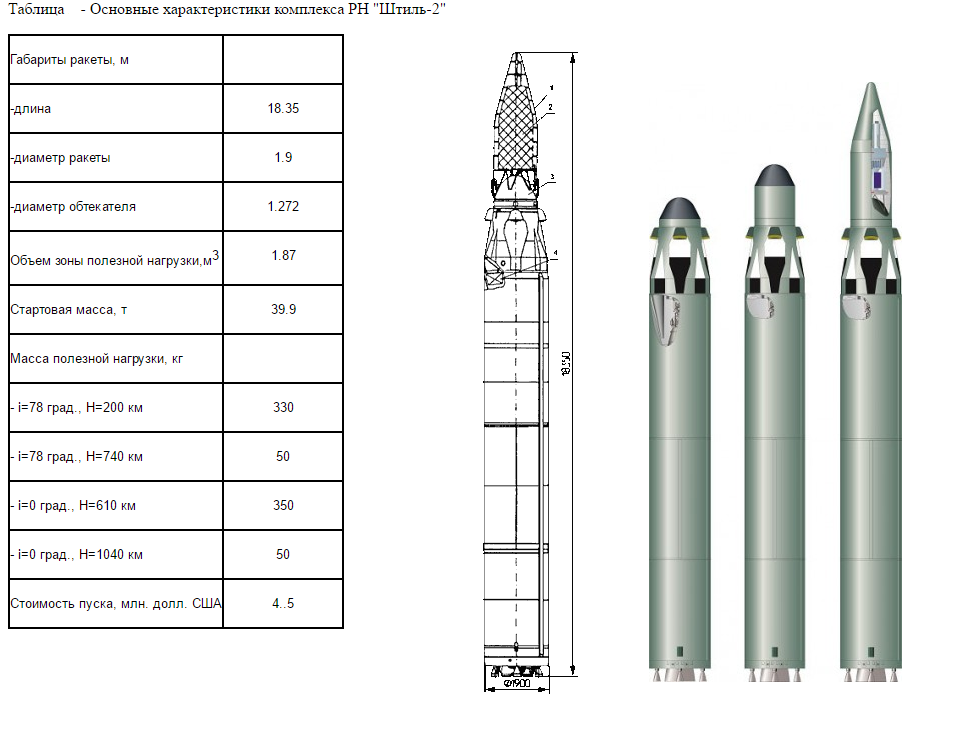
The infrastructure of the landfill includes:
Rocket-space complex "Shtil-2".
Ground launch complex.
The latter includes a technical and launching position, equipped with equipment for storage, pre-launch operations and rocket launch.
The complex of control systems provides centralized automatic control of the complex’s systems in all operational modes, control of pre-launch preparation and launch of the rocket, preparation of technical information and flight task, input of the flight task and control of the rocket for outputting the payload to a given orbit.
Information-measuring complex - provides reception and registration of telemetric information during the flight, processing and issuing measurement results to the launch customer.
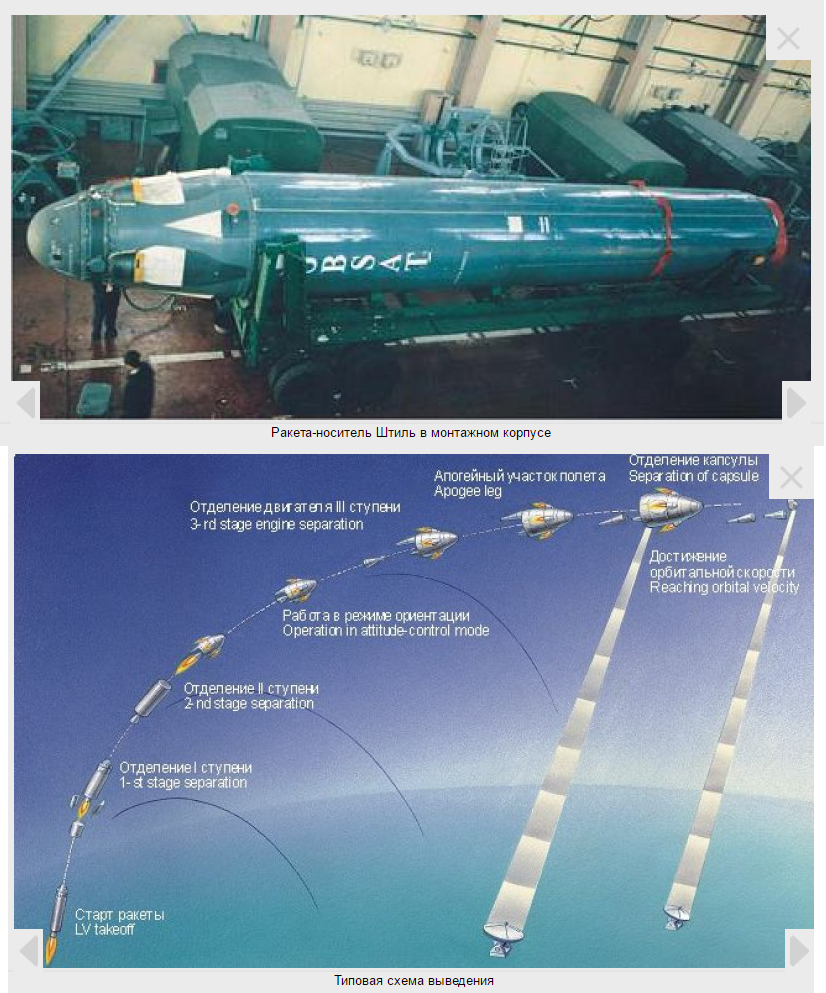
Numerous launches from the ground test bench and submarines showed high reliability of the prototype serial missile R-29RM (the probability of a successful launch and flight of at least 0.96 is achieved) .
Ground launch complex allows:
To carry out up to 10 starts per year.
Launch a series of spacecraft with a minimum interval of 15 days.
Provide for a long time the standby mode with high readiness of the rocket for launch.
Receive during the flight of the rocket telemetry information from the board using the information of the test site and remote measuring points.
The launches from the ground launch complex ensure the formation of orbits in the orbit inclination range from 77 ° to 60 °, which limits the scope of use of the complex.
When starting from a submarine mine, a launch is possible in the range of latitudes from 0 ° to 77 °. The range of possible inclinations is determined by the coordinates of the starting point.
At the same time, it is still possible to use the submarine for its intended purpose.
To improve the conditions for placing the payload, a version of the “Stiel-2.1” launch vehicle with a head fairing was developed.
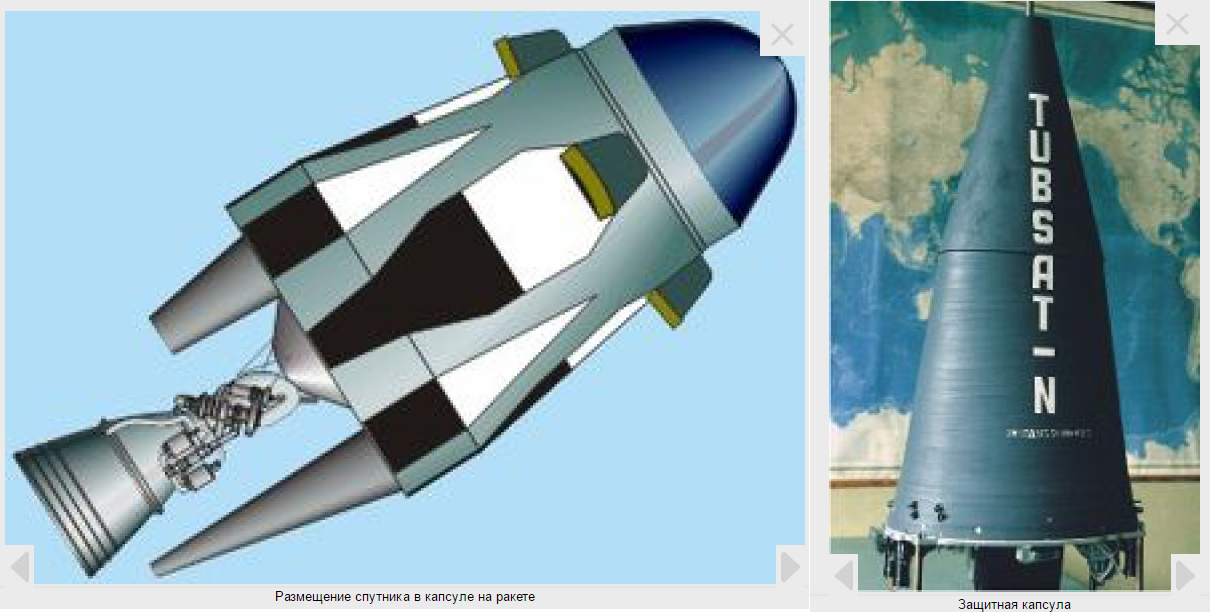
When the rocket was equipped with a larger head fairing and a small-sized accelerating unit (“Calm-2R”), the payload mass increased to 200 kg, the volume for placing the payload significantly increased.
The use of a submarine as a launch facility allows launching launch vehicles “Calm” to virtually any orbital inclination.

The aerodynamic fairing was sealed to ensure dust and moisture protection of the payload. The design of the aerodynamic fairing allowed the execution of hatches on the side surface for supplying additional connections of the payload with the equipment of the ground launch complex.
Launches could be conducted from a ground launch complex or from a submarine mine in a surface condition.
The main characteristics of the complex "Stiel-2" are given in Table.

The “Shtil-3A” rocket (RSM-54 with a new third stage and a dorazgona engine in the event of launch from an An-124 aircraft (according to the Aerospace project)) is capable of delivering a 950–730 kg payload to an equatorial orbit 200–700 km high .
The ending follows.
Original sources and quotes:
[1]Рок-н-ролл под Кремлем. Книга 4. Еще один шпион / Корецкий Д.А.
[2]Внешняя политика СССР во второй половине 1980-х гг. / Волошина В. Ю., Быкова А. Г. Советский период российской истории (1917—1993 гг.)
*Я ничего нового не написали не исследовал, лишь собрал воедино и добавил фотографии и видео. В основном всё позаимствовано у:
ГРЦ «КБ им. академика В.П. Макеева» И.И. Величко, Н.А. Обухов, Г.Г. Сытый, А.П. Шальнев «МОРСКАЯ РАКЕТНО-КОСМИЧЕСКАЯ СИСТЕМА»
Пресс-служба ГРЦ «КБ им. академика В.П. Макеева»
«Ракеты-носители на базе баллистических ракет подводных лодок» © Иван Тихий 2002 год
*перековеркивать технические термины и хороший текст- смысла не вижу.
[2]Внешняя политика СССР во второй половине 1980-х гг. / Волошина В. Ю., Быкова А. Г. Советский период российской истории (1917—1993 гг.)
*Я ничего нового не написали не исследовал, лишь собрал воедино и добавил фотографии и видео. В основном всё позаимствовано у:
ГРЦ «КБ им. академика В.П. Макеева» И.И. Величко, Н.А. Обухов, Г.Г. Сытый, А.П. Шальнев «МОРСКАЯ РАКЕТНО-КОСМИЧЕСКАЯ СИСТЕМА»
Пресс-служба ГРЦ «КБ им. академика В.П. Макеева»
«Ракеты-носители на базе баллистических ракет подводных лодок» © Иван Тихий 2002 год
*перековеркивать технические термины и хороший текст- смысла не вижу.
Photos of video, graphics and links:
Телеканал ЗВЕЗДА
www.miasskiy.ru
www.navsource.org
www.makeyev.msk.ru
www.img-fotki.yandex.ru
www.niskgd.ru
www.cableman.ru
www.habrastorage.org
www.studfiles.ru
www.ntpo.com
www.rosatomflot.ru
www.navsource.narod.ru
www.arms-expo.ru
www.fishki.net
www.makeyev.ru
www.topwar.ru
www.zonwar.ru
www.igordiksa.com
www.sovtime.ru
www.yaplakal.com
www.militaryrussia.ru
www.fas.org/nuke/guide/russia/slbm
www.directory.eoportal.org
www.miasskiy.ru
www.navsource.org
www.makeyev.msk.ru
www.img-fotki.yandex.ru
www.niskgd.ru
www.cableman.ru
www.habrastorage.org
www.studfiles.ru
www.ntpo.com
www.rosatomflot.ru
www.navsource.narod.ru
www.arms-expo.ru
www.fishki.net
www.makeyev.ru
www.topwar.ru
www.zonwar.ru
www.igordiksa.com
www.sovtime.ru
www.yaplakal.com
www.militaryrussia.ru
www.fas.org/nuke/guide/russia/slbm
www.directory.eoportal.org
